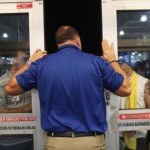Wait, Americans Spend How Much on Halloween?

U.S. retail sales were disappointing in September, worrying analysts thatconsumers may be feeling stretched or cautious as the biggest shopping season of the year rolls around. Some retailers make up as much as 30 percent of their yearly sales numbers from October to December.
Kicking off the end of year spending season is Halloween. Just how much do Americans spend on trick-or-treating and other Halloween festivities? The National Retail Federation (NRF) forecasts total Halloween spending—including candy, costumes, and decorations—to come in at $7.4 billion this year.
Halloween candy alone has run up a $2 billion tab every Halloween for the past three years, though the candy industry says that bad weather can lower the numbers slightly. “We are predicting a slight bump in Halloween confectionery sales this year (1.9 percent),” said Jenn Ellek of the National Confectioners Association. The NCA is expecting candy sales to reach $2.5 billion. Additionally, the NRF says that retailers could benefit this year from the holiday falling on a Friday, as parents will be more likely to take kids out and revelers more inclined to attend or throw parties, boosting costume sales. And don’t forget the puppies: The NRF estimates that Americans will spend $350 million just on pet Halloween costumes.
U.S. Halloween Spending
This is tiny compared to the $600 billion dollars Americans are projected to spend this holiday season. Annually, Halloween doesn’t even make the top five when it comes to holiday spending. Mother’s Day and Valentine’s Day both command double the dollar amount of spent on Halloween. According to the NRF, even the Super Bowl tops Halloween in terms of consumer spending.
As for the stock market, investors are surely looking forward to the market anomaly known as “Halloween Effect” this year. Research by Ben Jacobsendocuments a strong seasonal effect on the global stock market that pays outsignificantly higher returns from November to April, compared with May through October. His paper shows the U.S. stock market performing better during winter months from 1926 to 2006, but, he says this is due to a bump in stock returns in production sectors during those winter months, rather than holiday consumerism.
Sourced from theatlantic.com

























Recent Comments